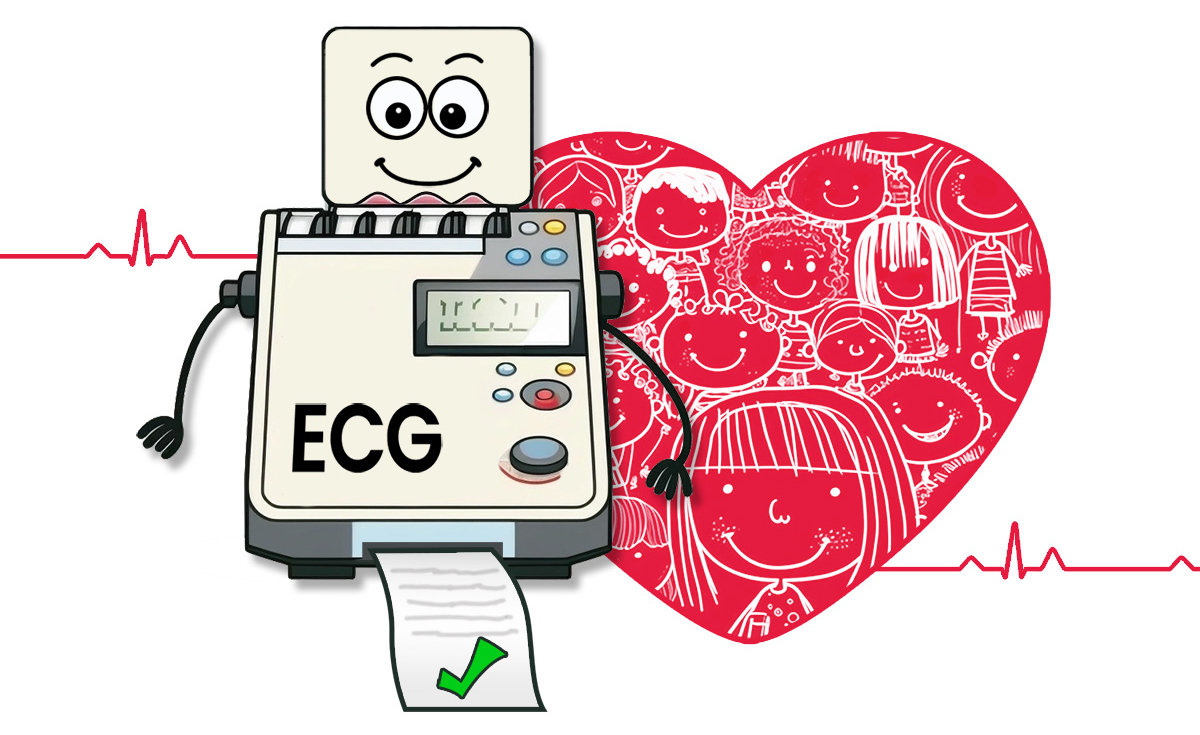Understanding Risk Factors and Heart Screening in Youth
February 22, 2023

Unfortunately, in our society, it is still a common belief that heart disease only affects adults and not young people. Yet, according to Parent Heart Watch, one in three hundred youth has an undetected heart condition that can put them at risk for sudden cardiac arrest. Some of these conditions include:
- Hypertrophic Cardiomyopathy
- Long QT Syndrome
- Coronary Artery Anomalies
- Idiopathic Left Ventricular Hypertrophy
- Wolff-Parkinson-White
The current standard approach to health history and annual physical examinations misses about 90% of youth that could be at risk. The reason is because most conditions that can lead to sudden cardiac arrest are NOT detectable with a stethoscope.
In 2021, the American Academy of Pediatrics updated their policy statement on
sudden cardiac arrest in youth to recommend routing heart screening for all youth, with diagnostic follow up for concerns.
The best way to screen youth for heart conditions is with the following:
- Electrocardiogram (ECG or EKG)
- Echocardiogram
- Review of personal and family history
- Follow up of warning signs
What is an Electrocardiogram (ECG or EKG)?
An ECG is a quick, simple, painless, test that measures and records the electrical activity of the heart. The ECG records this activity on graph paper via wires that are connected to electrode patches with slightly sticky backings and are placed on the chest, arms, and legs. It is important to understand that getting an ECG early in life may not be enough. Heart disease can develop through growth and puberty and repeat ECG testing is recommended every 2 years.
What is an Echocardiogram (ECHO)?
An ECHO displays the structure, function and blood flow of the heart on a monitor screen. A colorless gel is applied to the skin on the area of the chest where the heart is located. A transducer, a small microphone-like device, is placed on top of the gel and moved across the chest to obtain images that the cardiologist wants to see. An echocardiogram can detect structural abnormalities of the heart.
Review of Personal and Family History
Family history can be an important factor when determining if someone is at risk for sudden cardiac arrest. Here are a couple of typical questions to keep in mind:
- Does anyone in your family have hypertrophic or dilated cardiomyopathy, long QT syndrome, Marfan syndrome, or other heart arrhythmia problems?
- Has anyone in your family (age <50) died suddenly or unexpectedly from heart disease?
- Has anyone in your family (age <50) been disabled from heart disease?
Follow Up of Warning Signs
It is always important to be aware and listen to warning signs that could be a risk factor for sudden cardiac arrest. Some of these warning signs include:
- - Fainting or seizure
- - Chest pain or discomfort during or after exertion
- - Heart palpitations
- - Racing heartbeat
- - Unusual shortness of breath
- - Dizziness or lightheadedness during or after physical activity
- - Unusual fatigue or tiredness
Those mentioned above are the four best ways to screen young hearts. Some other methods of testing that can occur if an abnormality is found are:
- - Holter Monitor
- - Cardiac Stress Test
- - Cardiac MRI
- - Cardiac Cauterization
- - Genetic Testing
To learn more about Defibtech, and to join us on our quest to save lives from sudden cardiac arrest, visit www.Defibtech.com.
Sources:
https://parentheartwatch.org/resources/sca-prevention/heart-screenings/
https://parentheartwatch.org/aap-heart-screening-policy/
